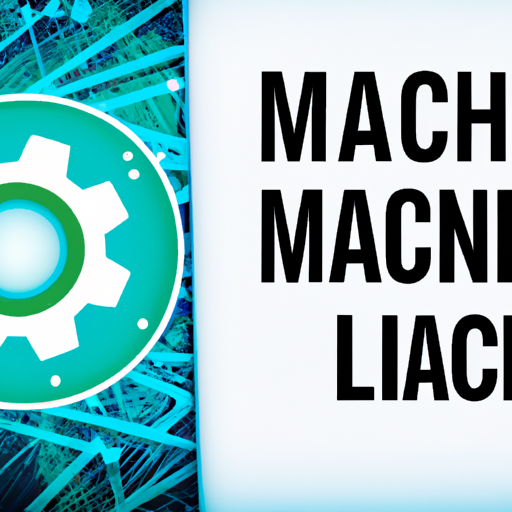Applying Machine Learning: Transforming Data Into Decisions
Applying machine learning can revolutionize how we interpret and use data in today’s world.
It’s an exciting field, blending ingenuity with groundbreaking technology to create smarter systems.
In this blog post, we’ll explore various aspects of applying machine learning, from basic concepts to real-world applications, and provide insight into how this technology is changing industries.
The Basics Of Applying Machine Learning
Machine learning is a subset of artificial intelligence and machine learning that enables systems to learn from data and make decisions without being explicitly programmed.
The primary goal is to develop algorithms that can identify patterns in data and make predictions or decisions based on those patterns.
For example, think of how social media platforms suggest new friends based on shared connections or interests; that’s machine learning at work.
There are different types of machine learning: supervised, unsupervised, semi-supervised, and reinforcement learning.
Supervised learning involves training a model using labeled data.
In contrast, unsupervised learning finds hidden patterns in unlabeled data.
Semi-supervised learning combines both approaches by using a small amount of labeled data along with a large amount of unlabeled data.
Finally, reinforcement learning trains models through trial and error to maximize rewards over time.
Real-World Examples Of Machine Learning Applications
Let’s bring the concept to life with some real-world examples.
One prominent area where machine learning has made significant strides is image recognition.
This technology allows computers to identify objects within images with remarkable accuracy.
For instance, consider how your smartphone can detect faces when taking photos or how social media platforms tag friends in pictures automatically. These are practical implementations of image recognition powered by machine learning algorithms.
Another fascinating application is within ultrasound tech programs in healthcare.
Machine learning models can analyze ultrasound images to detect abnormalities or potential health issues with greater precision than traditional methods. This not only enhances diagnostic accuracy but also speeds up the process for healthcare professionals.
Additionally, companies leverage machine learning for predictive maintenance in manufacturing. By analyzing sensor data from machinery, these models predict when equipment will fail so maintenance can be performed proactively—reducing downtime and saving costs.
Steps To Implement Machine Learning In Your Project
Applying machine-learning models doesn’t happen overnight; it requires careful planning and execution. Here’s a step-by-step guide:
1. Define The Problem: Clearly state the problem you want your model to solve.
2. Collect And Preprocess Data: Gather relevant data and clean it for analysis.
3. Choose A Model: Select an appropriate algorithm based on your problem type (e.G., Classification or regression).
4. Train The Model: Use your dataset to train the model.
5. Evaluate The Model: Test its performance on unseen data.
6. Deploy And Monitor: Implement the model into production and continuously monitor its performance for improvements.
Consider implementing these steps iteratively since refining each phase can significantly impact your model’s success rate.
Challenges And Considerations When Applying Machine Learning
While applying machine learning offers numerous benefits, it’s essential to recognize potential challenges as well:
– Data Quality: High-quality input leads to better outputs; hence ensuring clean datasets free from errors or biases is critical.
– Overfitting/Underfitting: Striking balance between overfitting (model too closely fits training set) versus underfitting (model fails generalizing well) requires careful tuning during training phases.
– Computational Resources: Some tasks demand substantial processing power—consider cloud-based solutions if local hardware capabilities fall short.
– Ethical Concerns: Addressing ethical implications such as fairness/bias prevention remains crucial when designing AI-driven systems impacting human lives directly (e.G., Hiring processes).
By acknowledging these aspects upfront while planning projects involving AI technologies like ML applications ensures smoother implementation journeys overall!
The Future Of Machine Learning In Various Industries
The future looks bright for those embracing advancements within fields related closely intertwined such as artificial intelligence & ML developments broadly speaking…
Industries across spectrum stand poised benefit tremendously incorporating sophisticated analytical tools driving innovation forward rapidly pace unlike any seen previously before now…
Healthcare sector expects see breakthroughs diagnosis treatment modalities driven largely advancements predictive analytics powered robust computational frameworks underpinning everything behind scenes seamlessly integrated workflows day-to-day operations clinicians alike…
Manufacturing domain foresees widespread adoption smart factories leveraging IoT connectivity coupled advanced pattern recognition capabilities streamline production lines optimizing resource utilization real-time basis ensuring minimal wastage maximum efficiency possible throughout entire lifecycle management processes end-to-end holistic manner achieving unprecedented scales operational excellence never thought feasible earlier times indeed…
Ultimately though true potential lies unlocking untapped possibilities realms imagination daring enough explore uncharted territories pushing boundaries what conventional modes thinking permit envisioning whole new paradigms reshaping modern landscape ways unimaginable just few decades ago…
That’s thrilling prospect worth investing energy resources passionately pursuing relentlessly forthwith…

